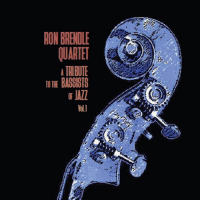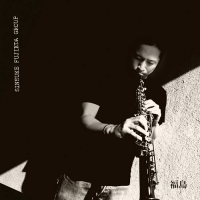Home » Jazz Articles » Album Review » Joe McPhee/John Butcher: At The Hill Of James Magee
Joe McPhee/John Butcher: At The Hill Of James Magee
As well as Butcher, Joe McPhee was also invited to participate, appropriately as he was no stranger to playing in interesting environments: he studied Pauline Oliveros' musical theories and he worked with the Deep Listening Band, as heard on their album Sanctuary (Mode, 1995). From the concert promoters' point of view, having two saxophonists from opposite sides of the Atlantic must have made sense. Despite each of them being prolific and busy, another attraction must surely have been that Butcher and McPhee had never played together before. All of these ingredients combined to make this April 2010 performance quite an event.
On the day, Butcher played tenor saxophone and McPhee alto, which, allied to their contrasting playing styles, makes it relatively easy to identify their individual contributions. That is fortunate as the format of the concert could lead to confusion; the two saxophonists began in the North Building (McPhee) and the South Building (Butcher), separated by the sixty-yard walkway, with a microphone stationed in each building to capture their playing, the North one being heard on the left channel and the South on the right. After playing in their respective buildings for about ten minutes, the two then exited those buildings, promenaded along the walkway while still playing, passed each other at its centre and continued on so that they ended up in different buildings to those in which they had started, where they remained and played for a further nine minutes or so. As the microphones remained fixed, this meant that the saxophonists swapped channels, with both being heard on both channels for a while during the changeover. Given the distance between the two buildings, the question arises of whether the players could hear each other well enough to respond to each other's playing; was this a duet or two simultaneous solos? Significantly, the resulting track, which opens the album, is entitled "Sometimes Yes, Sometimes No." Nonetheless, when the two are near the centre of the walkway, clearly in earshot, their interactions are highly sympathetic to one another and to their surroundings, a joy to hear. The structure of the track gives the listener options—to balance left and right channels to hear both players or to favour left or right thus hearing one player then both together during the crossover then the other...
Fortunately, on the day, both microphones and the focus shifted to the central crossroads area for the album's remaining five tracks, two solo pieces from each player, culminating in a final duet in which the two could obviously hear one another. Excellent as the four solo tracks are, on the duo track it is intriguing first to have heard each player solo—the 'ingredients' of the duo—as this sheds light on the duo itself and the accommodations the players make in order to play together effectively. That is certainly the case here, with the final duo proving breathtaking as the two horn lines intertwine and coalesce, being applauded long and loud by the audience who were lucky enough to be at this event. One slight regret is that, at just over six minutes, the final duo feels on the short side. On that evidence, Butcher and McPhee should reconvene and record as a duo again as soon as possible. Meanwhile, this album will do very nicely; it is a credit to both saxophonists and also to James Magee and his hill.
Track Listing
Sometimes Yes, Sometimes No; Mine Shaft; Paradise Overcast; A Forty Foot Square Room; Torcello; St. Ida’s Breath (Less Her Head And Teeth).
Personnel
Joe McPhee: alto saxophone; John Butcher: tenor saxophone.
Album information
Title: At The Hill Of James Magee | Year Released: 2019 | Record Label: Trost Records
Tags
PREVIOUS / NEXT
Support All About Jazz
 All About Jazz has been a pillar of jazz since 1995, championing it as an art form and, more importantly, supporting the musicians who make it. Our enduring commitment has made "AAJ" one of the most culturally important websites of its kind, read by hundreds of thousands of fans, musicians and industry figures every month.
All About Jazz has been a pillar of jazz since 1995, championing it as an art form and, more importantly, supporting the musicians who make it. Our enduring commitment has made "AAJ" one of the most culturally important websites of its kind, read by hundreds of thousands of fans, musicians and industry figures every month.


















